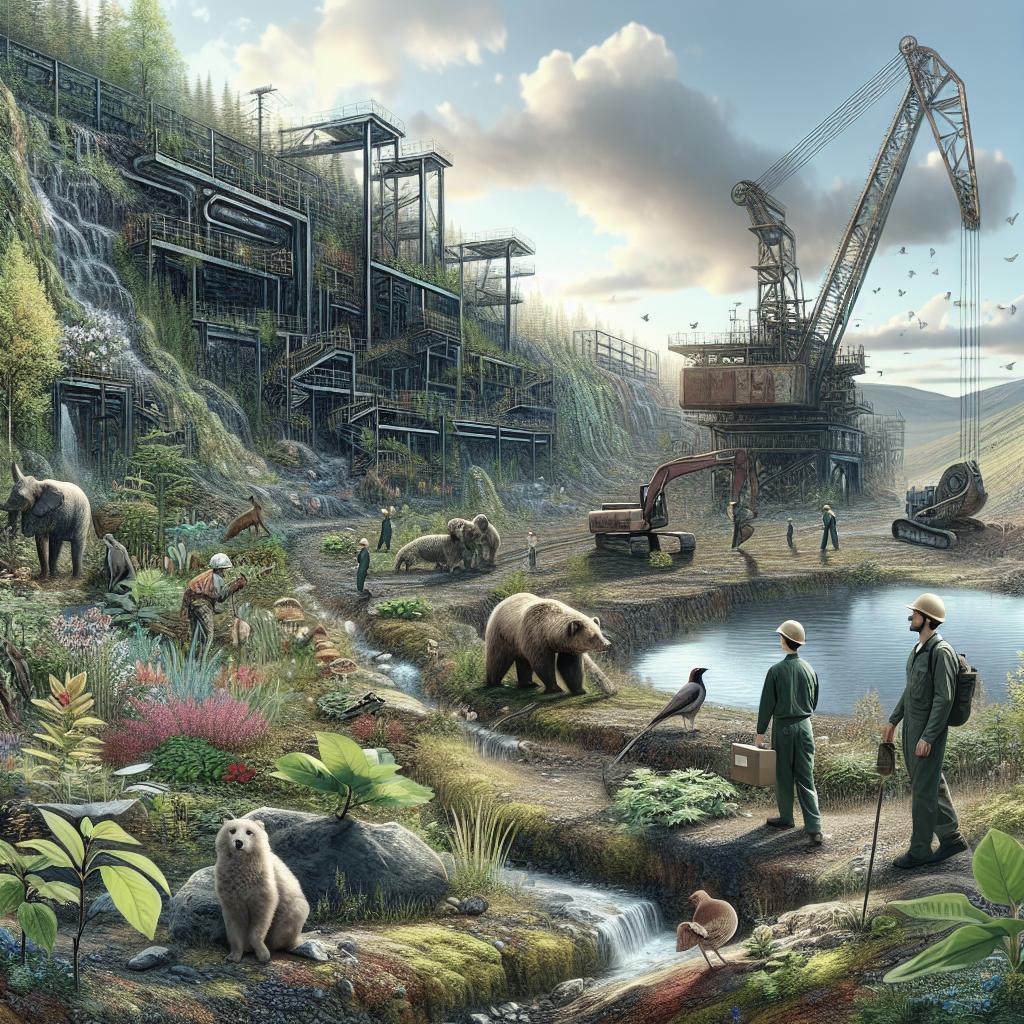<>
“`
The intersection of biodiversity conservation and the mining industry presents unique challenges and tremendous opportunities. As the mining sector continues to evolve, commitments to preserving the natural environment have become more significant than ever. This blog post will explore the progress made in mainstreaming biodiversity into mining practices, the opportunities to form stronger frameworks, the industry’s push toward decarbonization, how work health and safety are managed, and the importance of Australia’s role in nickel production. Each section will provide insights into the benefits resulting from these biodiversity conservation efforts.
Industry Commitments
Progress made: Mainstreaming biodiversity and forests into the mining sector
Over recent years, there has been a noticeable shift in how leading mining companies perceive environmental sustainability. Industry giants are no longer seeing biodiversity conservation as merely a legal requirement but as a vital aspect of corporate responsibility and long-term operational success. Through partnerships with environmental organizations, innovative practices, and comprehensive impact assessments, the mining sector has made strides in integrating biodiversity considerations into their core operations.
Implementing biodiversity action plans and rigorous reporting mechanisms ensures that mining activities do not encroach on critical habitats or lead to species decline. These efforts not only help protect the natural world but also enhance the reputation and social license of mining companies, making it easier for them to operate in diverse ecological zones.
Opportunities to act: Strengthening a biodiversity framework for mining at COP15 and beyond
The Conference of the Parties (COP15) presents a significant platform for reinforcing commitments to biodiversity conservation within the mining industry. By leveraging international agreements and aligning corporate strategies with global biodiversity goals, mining companies can play a crucial role in mitigating environmental impacts. Opportunities at COP15 include the development of clearer conservation guidelines, financial incentives for sustainable practices, and collaborative efforts between governments, organizations, and the private sector.
Looking beyond COP15, continuous advancement in technology and research can drive innovation in biodiversity frameworks. Such advancements can streamline the adoption of conservation practices, set new standards for environmental stewardship, and ultimately lead to more resilient ecosystems around mining areas.
Decarbonising the mining industry
In recent years, the push for decarbonization in the mining industry has gained momentum, addressing the urgent need to reduce greenhouse gas emissions. Implementing renewable energy sources such as solar and wind power, electrifying machinery, and optimizing energy management systems are among the measures companies are adopting. These steps not only help reduce the carbon footprint but also contribute to the broader goal of biodiversity conservation.
Lower emissions mean fewer pollutants entering natural habitats, preserving air and water quality vital for the survival of various species. Moreover, decarbonization aligns with global climate targets, fostering a more sustainable and environmentally friendly mining industry.
Managing work health and safety across Australia
Ensuring the health and safety of workers in the mining industry extends beyond physical hazards to include environmental considerations. Biodiversity conservation plays an integral role in maintaining the well-being of employees by ensuring a safer and healthier work environment. Practices that mitigate habitat destruction and pollution reduce the risk of exposure to harmful substances and improve the overall ecosystem health in mining areas.
Additionally, companies focusing on biodiversity conservation are more likely to comply with stringent environmental regulations, reducing the likelihood of legal issues and creating a more stable working environment. This proactive approach enhances employee morale and promotes a culture of safety and responsibility.
How Australia can take its nickel-back
Australia holds a prominent position as a leading producer of nickel, a critical resource in the transition to green technologies. By emphasizing biodiversity conservation in nickel mining operations, Australia can set a global standard for sustainable resource extraction. Initiatives such as habitat restoration, responsible waste management, and collaboration with Indigenous communities ensure that mining activities respect and protect local ecosystems.
Furthermore, sustainable nickel mining practices can enhance Australia’s reputation on the global stage, attracting investments and partnerships with industries focused on green innovation. This not only strengthens the economy but also contributes to global efforts in biodiversity conservation, demonstrating that economic growth and environmental stewardship can go hand in hand.
Summary of main points:
| Section | Main Points |
|---|---|
| Industry Commitments | Shift towards biodiversity conservation, partnerships, rigorous impact assessments. |
| Mainstreaming Biodiversity | Action plans, reporting mechanisms, enhancing reputation and social license. |
| Strengthening Biodiversity Frameworks | COP15 opportunities, international agreements, continuous technological advancements. |
| Decarbonising the Mining Industry | Renewable energy adoption, reducing emissions, aligning with climate targets. |
| Work Health and Safety | Environmental considerations, safer work environments, regulatory compliance. |
| Australia’s Nickel Production | Sustainable practices, habitat restoration, global standard setting. |
“`


